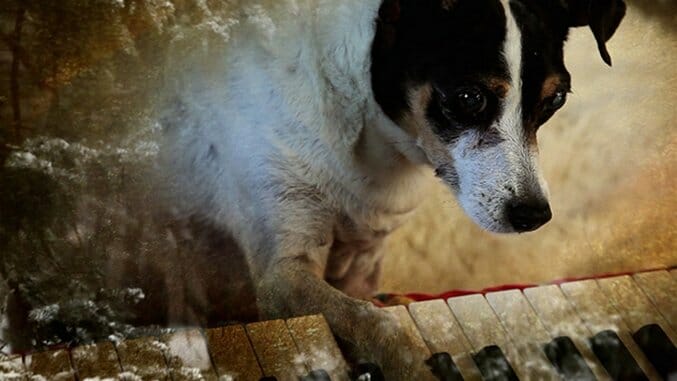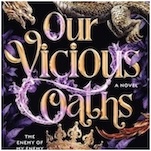Heart of a Dog

As one might guess from the title, the genesis of Laurie Anderson’s remarkable new film essay is a dog—specifically, her rat terrier Lolabelle…and even more specifically, Lolabelle’s death. Though it is melancholy, Heart of a Dog is hardly funereal. Instead, the personal loss—plus two other human losses; more on those later—has inspired in Anderson a wide-ranging meditation on life, death and the unfathomable mysteries of what lies beyond.
Some of the details she includes are specific, topical even. Anderson features anecdotes about deaths she’s heard of and/or experienced, like the very public, final 24 hours of architect Gordon Matta-Clark’s life, or her own hospital stay after a diving accident threatened to leave her paralyzed. Others, however, are broader in scope. Post-9/11 fears are a major thematic thread—not only the immediate devastation, but longer-lasting ramifications: increased police presences in major NYC transit hubs, for example, or more invasive national security measures.
Still, Heart of a Dog broaches broader and cosmic dimensions in its death-haunted meditations. A pastoral California getaway with Lolabelle, for instance, leads to an incident involving a hawk which Anderson, based on her dog’s reactions, interprets as Lolabelle’s sobering first brush with the threat of mortality. Anderson, thanks in large part to her own Tibetan-Buddhist leanings, occasionally ventures into outright philosophizing. One of the film’s more memorable bits deals with the grieving process—specifically, the empathetic idea of being able to “feel sad without being sad.” Thinking about what lies beyond this mortal coil, Anderson devotes an extended sequence to speculating about what happens to people during and after the “bardo,” the Tibetan-Buddhist term for a 49-day purgatorial state between two planes of existence.
Much of Anderson’s musings are supported by her usual trippy musical style: evocative low-register synthesizer droning, electronically amplified cello lines, a paradoxical vibe of alienating cool. Visually, however, Heart of a Dog is a striking mixed-media collage, with Anderson assembling home movies (some of them digitally manipulated), fictionalized reenactments, archival footage, surveillance videos and the occasional animated sequence. At one point, she mentions her love for Francisco Goya’s painting “The Dog,” and much of the ensuing home-movie footage is tinted with the gold tones Goya used on his canvas. It’s indicative of the kind of impressionistic imagination Anderson brings to her images in the film.
-

-

-

-

-

-

-

-

-

-

-

-

-

-

-

-

-

-

-

-

-

-

-

-

-

-

-

-

-

-

-

-

-

-

-

-

-

-

-

-








































